The strategic challenges in the Arctic and the High North
Historical archive
Published under: Stoltenberg's 2nd Government
Publisher: Ministry of Defence
Speech/statement | Date: 28/10/2010
Speech for the Atlantic Council, Washington DC, 28 October 2010 by Grete Faremo, Minister of Defence, Norway.
Speech for the Atlantic Council, Washington DC, 28 October 2010
by Grete Faremo, Minister of Defence, Norway
Ladies and gentlemen,
It is an honour for me to be here today. Thank you for this opportunity to address the important issue of: The strategic challenges in the Arctic and the High North.
Norway is a transatlantic maritime nation. We are the world’s second largest fish exporter, third largest energy exporter, and we have one of the world’s largest merchant navies. The development in the High North is of key importance for the Norwegian Government.
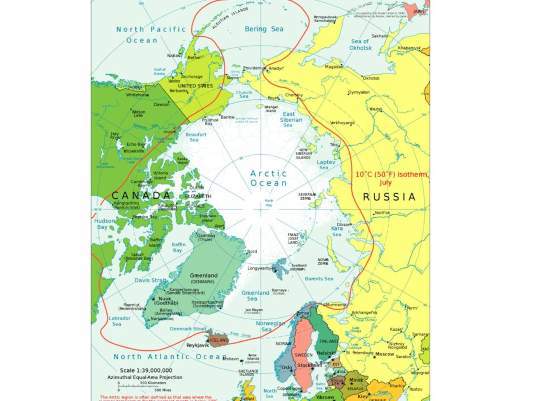
Obviously our focus on the North has to do with our geographical location, and our strategic interests. As you can see on the map, Norway, including Svalbard, is bordering not only the North Atlantic and the Barents Sea, but also the Arctic Ocean.
As the polar icecap is withdrawing, we are facing both new challenges as well as new opportunities. We now need to prepare to handle these challenges in a good way. At the same time we must seek to use the new opportunities responsibly.
Five countries are bordering the Arctic Ocean, four are NATO Allies; the United States, Canada, Denmark and Norway. And Russia is a NATO-partner.
Climate change will have a geostrategic impact in the High North. It is our view that the ongoing climate change in the Arctic is irreversible. This assessment was also supported by your National Oceanic and Atmospheric Administration (NOAA) last week.
Man-made climate changes are a great cause of concern for us. In my talk today I will primarily focus on the security policy aspects of climate change in the High North.
Environmental challenges
The Arctic is one of the iciest, coldest, most vulnerable and untouched places on earth. It is also an area where we have limited expertise.
Until recently, the level of attention has not reflected the growing strategic importance of the region.
The Arctic climate is warming rapidly. The arctic ice cap is melting faster than expected.
The slide shows this falls minimum ice coverage:
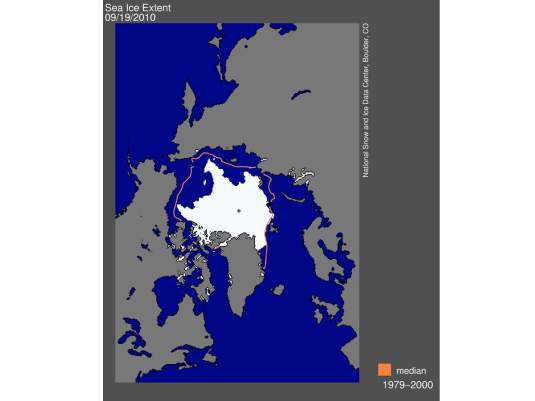
Forecasts have been revised numerous times, and the Arctic Ocean could during the summer be free of ice relatively soon. Many of today’s estimates indicate ice free summers in the 2030s. Based on a number of revisions of earlier estimates, we should not rule out the possibility of an earlier date.
The climate change will have serious impact on the permafrost, which will decrease significantly. Huge quantities of carbon are stored in permafrost on land and below the shallow seabed, especially along the Russian shoreline. Many studies conclude that rising temperatures are already releasing carbon in the form of methane.
Experts say methane emissions from the Arctic have risen by almost one-third in just five years, and that rapidly rising temperatures are to blame.
The discovery follows a string of reports that previously frozen boggy soils are melting and releasing methane in greater quantities. Such Arctic soils currently lock away great quantities of methane, a far more potent greenhouse gas than carbon dioxide. Some scientists describe melting permafrost as a ticking time bomb that could overwhelm efforts to tackle climate change.
The slide indicates consequences of melting permafrost: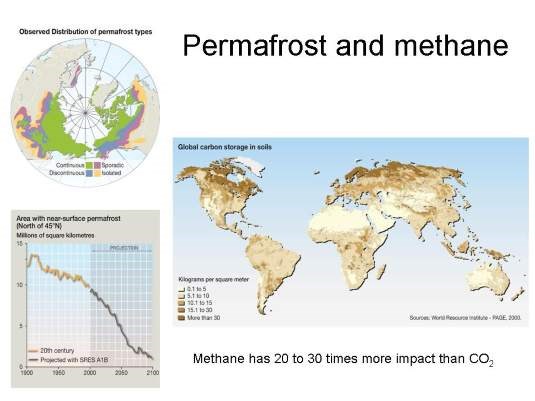
They fear that the warming caused by increased methane emissions will itself release yet more methane and lock the region into a destructive cycle that forces temperatures to rise faster than predicted.
New opportunities
Today, we don’t know in detail the impact of the climate change.
Many international studies conclude that the consequences on the environment will be severe on a global basis.
Therefore, it is indeed a paradox that exactly this development presents new opportunities. The ice melting is paving the way for commercial activity and cooperation.
First, new possibilities are emerging for exploiting the rich energy reserves hidden under the Arctic Sea. According to a study published by the US Geological Survey in July 2008, the Arctic is the largest unexplored prospective area for petroleum remaining on Earth.
As you can see illustrated here:
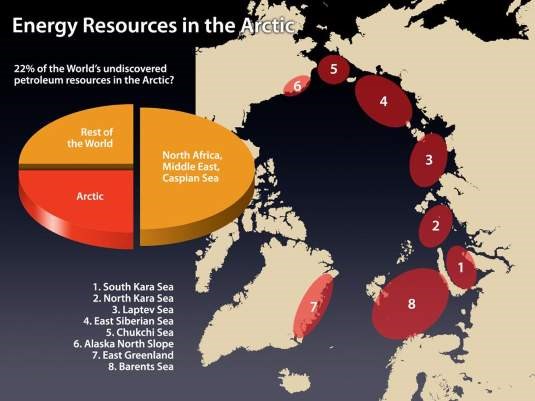
The area accounts for about 22 percent of the undiscovered oil and gas resources in the world.
This is an estimate. The figure may be too optimistic, and in any case, the Arctic can not by any means replace the Middle East as the principal global source of oil and gas.
That being said, the relative importance of the High North as an energy supplier is growing. Some of the resources are in the Norwegian sector. The first Norwegian deliveries of liquid natural gas have already been transported by ship to markets in Western Europe and in the United States. However, most of the petroleum resources in the European High North are located in the Russian sector.
Secondly, the area contains one of the larges remaining fish stocks in the world. Russia and Norway have established a very effective fishery administration and control in the High North. With climate change, there are many unanswered questions. Perhaps large fish stocks could migrate because of changing sea temperature. Perhaps important fish resources will disappear. We must monitor these developments. Conflicts of interest and fishery rights could emerge, or we could see new cooperative regimes being established.
And last, but not least, the ice melting opens up alternative routes for transportation between the United States, Europe and Asia.
As you can see illustrated here:
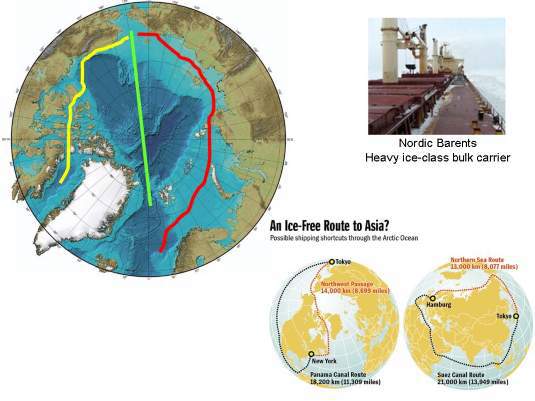
New sea lines have already opened through the North East passage and will also be opened straight across the North Pole. In a few years the shortest route for sea transport from Asia to Europe goes via the Barents Sea. The distance between East Asia and Western Europe will be reduced by more than 7 400 km. Accordingly, the sailing time will be significantly reduced. The summer sailing season is currently assessed to be 2 – 2, 5 months a year.
Hence, a nation like China might become an important shipping nation in the High North in the near future.
The Norwegian vessel, Nordic Barents, just sailed through the North East passage from Kirkenes to China. This was the first non-Russian ship ever to sail this route on a commercial basis. Russia plans to increase their sailing frequency in this area and are building new vessels for this purpose.
There are substantial mineral resources on shore in the Arctic region, and we will probably see considerable increase in transportation in to, and out of the Arctic. The climate change could generate more economic activity in the whole region.
Norway welcomes the commercial opportunities opened by the new sailing routes. At the same time we must keep in mind the potential for shipping accidents in a vulnurable area. Fisheries and the overall environment could be strongly and negatively affected by such incidents.
The changes that I just described; the ice melting, the huge reserves of natural resources and the opening of new transport lines, have strategic consequences. This is the reason why the region is gaining importance. This is recognised not only in Russia, but in the EU, Asia and the United States as well.
Stability and cooperation
Most of the identified challenges in the Arctic and the High North can be described as soft security challenges. These are related to climate change, management of resources, migration of fish stocks, pollution, search and rescue etc.
However, the discussions in media about the High North are often focusing on competing interests and the potential for conflict. We see titles like, “the return to the cold war”, and “the race for the High North” – and speculations concerning competition for oil and other natural resources.
From a Norwegian perspective, we don’t agree with these more alarmist views.
On the contrary, the region is currently stable and calm and the tension is low. We will do all we can to preserve that situation.
First, we have a solid international legal framework in place where the states bordering the Arctic have agreed that the Arctic Ocean is governed by the United Nations Convention on the Law of the Sea (Ilulissat-declaration from 2008). Nevertheless we need to maintain a continued focus on strengthening legal regulations in areas where existing regulations might not be sufficient.
Second, many of the boundary issues in the region have been resolved. Norway has resolved all the outstanding delimitation issues with Denmark – with regard to the Faroe Islands and Greenland – and with Iceland. And, more importantly, in September this year, Norway signed an agreement with Russia, ending more than 40 years of negotiations over the delimitation line between our two countries in the Barents Sea. Only ratification remains.
Third, we have fishery agreements that provide a solid foundation for responsible management with our close neighbours.
Furthermore, most of the potential oil and gas resources in the High North are situated in undisputed areas.
Finally, all the countries in the region currently have a mutual interest in keeping confidence, dialogue and cooperation on a high level. This is in many ways a precondition for solid economic development.
However, there are no guarantees for a positive development. We need to safeguard against negative developments with the potential for crisis and conflict.
As the slide indicates, NATO territory stretches to the North Pole:
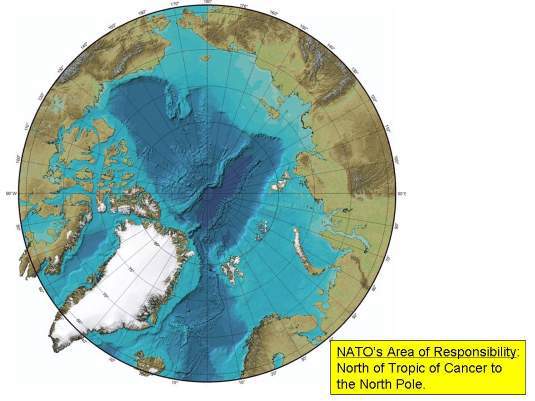
Cooperative arrangements for fishery, transportation, oil and gas, search and rescue and environmental issues needs to be further developed. We must avoid that conflicts of interest dominate the international discussion on the High North.
The High North continues to be of great relevance for Russia’s military. A large share of its nuclear arsenal is located in the area and much testing of new weapons systems takes place here. In addition the area is important for training and exercises particularly for the Navy and the Air Force. A main task for Russian conventional forces in the North is defending the nuclear assets in the High North.
As Russia has gradually recovered economically, we have seen a more self-confident Russia, and increased military activities in the area.
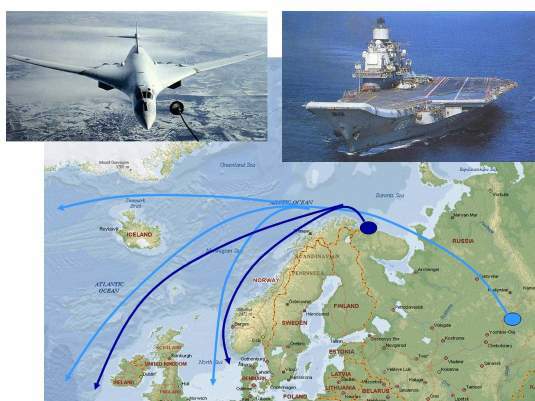
Patrols of strategic aircraft into the Atlantic have started again but at a lower frequency than during the cold war. Similarly submarines are again patrolling arctic waters. Recently we have seen a successful test of the Bulava strategic submarine based missile, and Russia is building new more capable submarines.
We do not interpret these Russian activities as hostile, or specifically directed against Norway. On the contrary, we want to expand our cooperation with Russia also on military issues. And we want NATO to engage in cooperation with Russia, both in the High North and elsewhere.
NATO has for some time been too single-mindedly focused on operations out of area. We need to continue our efforts in deployed operations, but we also need a reformed Alliance that in the future can keep an eye on more than one security challenge at the same time. NATO must be able to address emerging security challenges as well as existing challenges closer to home.
Norway has been pushing this issue for some years, and we are pleased to note that our views are well reflected both in the Albright report and in the Draft-Strategic Concept.
This does not imply that NATO can not engage “out of area”. Such operations may be crucial also in the future.
However it is important that we ensure NATO´s role as the most relevant supplier of security in the public opinion of all the member states. NATO must be present and visible in every region, dealing with the full range of issues of all its members, and hereby reinforcing cohesion and solidarity amongst its members.
Two decades ago, NATO´s legitimacy was obvious and taken for granted by the general public in the founding member states. Today, we have to tell our children about the role and the importance of NATO. People must be convinced of the need for and the relevance of NATO. This has become even more prevalent with the inclusion of new member states.
NATO must be a partner for all of its members, in addressing the security concerns close to their borders. The challenges vary among members. The Black Sea, Northern Africa, the Baltic Sea Area and the High North all present different challenges, and NATO has important roles to play in all these areas.
In the High North we want a multinational presence in training and exercises. NATO must have a situational awareness and knowledge about military forces and activities in the area. NATO must also know the politic-military issues of relevance. And NATO must conduct training and exercises in the area, and be able to do the necessary analysis and lessons learned in order to increase its ability to carry out operations if and when a need arises. NATO should also have a generic operations plan for all relevant areas to be prepared to act in crises.
In Norway, we have moved our national joint operational headquarter to Bodø in the North of Norway. We have also strengthened our military presence in the North and intensified maritime surveillance in the High North. This is important for solving national tasks, as well as providing collective security.
NATO is the cornerstone of our security. NATO needs to develop its cooperation with Russia and vice-versa. This is essential for security in the High North.
International cooperation
Multinational presence in the High North is considered very important, and we highly appreciate the participation of Allied and partner forces in exercises and training in Norway.
We strongly support the work of the Arctic Council and the Barents Euro-Arctic Council on a range of issues related to the High North. We especially value the Search and Rescue initiative within the framework of the Arctic Council. In my view, the IMO (International Maritime Organisation) also plays an important role in developing guidelines concerning safety at sea in this region. We also need to exploit the potential for close cooperation that can be developed through the North Atlantic Coast Guard Forum.
Closing remarks
I have in my presentation focused on the current and emerging challenges and opportunities in the High North. They are important to my country and my government.
We need to cooperate closely with all parties in the High North. This includes enhancing NATO’s relevance in areas where the Alliance should have a role. We also need to make every possible effort to get Russia to be a real stakeholder in a future stable and predictable region. Without serious and constructive Russian involvement, we will all be faced with unwanted challenges in the region. In this area NATO, through the NATO – Russian Counsel (NRC) should have an important role.
The High North is only one of many areas where the Alliance needs to have expertise and capabilities that can be used, if needed, for crisis management and conflict prevention. My government is pleased with the general direction of NATO’s new Draft-Strategic Concept, and the work that is being done to reform NATO’s military command structure.
We would like to see NATO in the High North.
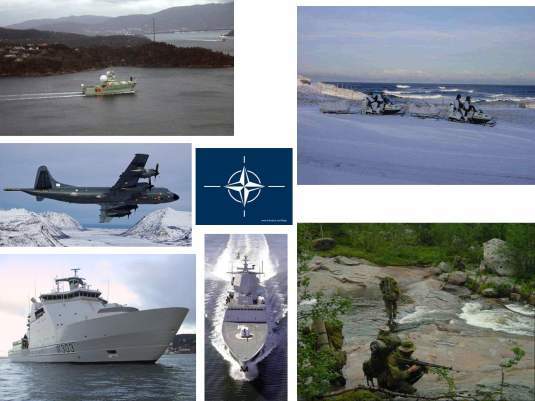
As a nation with less than 5 million people, and located close to an area of great geo-strategic importance, it is essential that security and defence can be achieved and ensured collectively. The opposite would be a negative trend towards renationalisation of defence and security. This would in our view contribute to increased risk, not only for Norway, but also for our friends and Allies.
Norway is modernising its armed forces and we are increasing our defence budget. We view it as very important to handle our national responsibilities in the High North in a robust and credible manner. We believe that we are succeeding, and that we through our national efforts also provide significant contribution to collective security in the region.
On a 24/7 basis Norway conducts an ongoing national military operation in the High North – Operation North, which covers military tasks and support to the civil society. For us it is a large scale operation under often challenging climatic conditions. In comparison the level of our commitment would equal the US Armed Forces committing about 200 000 soldiers, sailors and airmen to a similar operation.
NATO is the cornerstone of Norwegian security. We need an Alliance that is relevant for future challenges. The changes in NATO and the changes in the High North offer new opportunities for cooperation with the US.
The United States is our most important ally and I want to underline the importance and emphasis we put on our close cooperation. Your support is greatly valued.
To stay relevant, we need to adapt to a changing security environment.
Thank you for your attention.